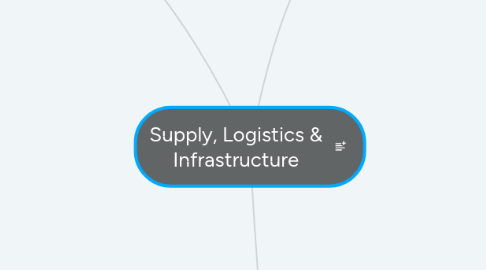
1. Supply
1.1. Timeliness: How to predict supply/demand during fast-evolving scenario. Prevent an over-reliance on JIT (issues of trust).
1.1.1. TRANSFORMATION: Need a 'Plan B', beyond short supply chains and JIT delivery.
1.2. Safe/Quality: How to prevent quality shortfalls in obtaining supply from non-traditional suppliers - no compromise
1.3. Overcoming bureaucracy: avoiding pitfalls of public procurement and traditional supply distribution.
1.3.1. INNOVATION: Movement towards direct procurement, directly sourcing suppliers. Challenges to overcome inc. languages, quality standards, staff training on direct sourcing and people on site to facilitate this. (Examples: France/UK).
1.3.2. INNOVATION: Up-scaling of national supply chain from NHS to include care homes, etc. Potential for e-procurement? Importance of local allocation and mutuality.
1.4. Stockpiling: how to ensure that this remains current over time and of correct quality standards/ regulations.
1.4.1. How to prevent an 'overload' of materials which are needed for long-term? ('Bullwhip Effect'). Or could we harness organisations at point of demand?
1.5. Procurement
1.5.1. Out of the box for providers: alternative suppliers for PPE, for example, where there is limited # of suppliers.
1.5.1.1. Database of PPE consumables and equipment manufacturers to better track and allocate limited resources.
1.6. Production Policies
1.6.1. VAT exemptions for PPE and other critical medical technologies?
1.6.2. Special funding for manufacturers of PPE (e.g. for reusable PPE suppliers)
1.6.3. Rigorous but faster certification processes for PPE to ensure product flow to hospitals
2. Logistics
2.1. Storing and distribution methods
2.1.1. Facilities capacity (internal vs. external warehousing)
2.1.2. Triage of protocol within healthcare providers
2.2. Traceability and global standards
3. Infrastructure
3.1. Physical
3.1.1. External hospital environment
3.1.1.1. If a hospital is part of a network, and not only one building, then how do we manage an infectious disease across the entire estate?
3.1.2. Internal hospital environment
3.1.2.1. Clean/contaminated routes of materials and staff movement in and around hospitals to encourage better disease management.
3.1.2.1.1. ‘Clean’ staff going into a hospital and ‘dirty’ staff coming out of a hospital. Use same facilities/same staff places. Need to separate the changing rooms.
3.1.2.1.2. Emergencies departments with different access, two preferably – useful for Covid-19 management. Special urgency just for coronavirus patients.
3.1.2.2. Temporary hospitals: lessons to be learned from this? What should be kept?
3.1.2.3. Different emergency access: dedicated to Covid-19
3.1.2.4. ICU: readiness of beds, equipment > preparedness
3.1.2.5. Ability to isolate (wards/studio rooms) or separate parts of the hospital
3.1.2.5.1. Buffer wards - to be converted during times of crisis
3.1.2.5.2. Compartmentalisation of the hospital.
3.1.2.5.3. Establishment of smaller, one bed rooms which can be readily isolated.
3.2. Technical
3.2.1. Need for interoperability (pathology especially)
3.2.2. IT Hardware

